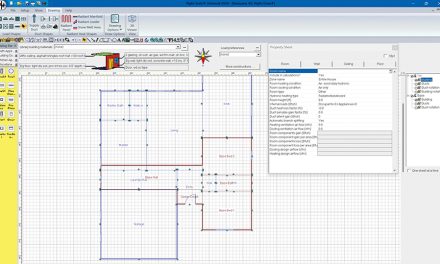COVID-19 has impacted virtually every sector of the economy through changes in consumer spending, a global recession, and in some states, full economic lockdowns.
Add in an election year full of presidential politics, the unexpected passing of a Supreme Court Justice, plus a divided Congress, and it is easy to see why the federal government hasn’t moved forward with important issues to the HVACR industry such as the phasedown of HFC refrigerants.
But the industry is still hopeful for a legislative resolution this year.
More than 100 nations have agreed to phase down the production of hydrofluorocarbon (HFC) products, including many common air-conditioning and refrigeration refrigerants in the coming years. To ensure the next generation of products is available, the HVACR industry has invested heavily in the development of new refrigerants.

Unfortunately, current federal regulations have not kept pace with this level of investment and innovation. This means the United States is at risk of innovating first and regulating last ‘ and being left behind as a result.
Introduction of the Senate Bill 2754
To make sure the U.S. market has a smooth transition from current HFCs to future refrigerants the industry has asked Congress to authorize the U.S. Environmental Protection Agency (EPA) to write new regulations allowing for the phase down. On October 30, 2019, Senator John Kennedy introduced the American Innovation and Manufacturing Act (AIM Act), S. 2754, to phase down the production and use of HFC products, including refrigerants, through 2036.
The legislation is supported by trade associations representing producers, manufacturers, distributors, and contractors across the HVACR industry. This broad support highlights the important role a structured phasedown plays in ensuring an orderly transition to the next generation of refrigerants.
The AIM Act legislation provides a limited grant of authority to the EPA to regulate the production and consumption of HFCs, which paves the way for new technologies and further innovation. Furthermore, it protects U.S. jobs across the HVACR industry. S. 2754 would phase down the production and import of HFCs over 16 years to gradually reduce the availability of older refrigerants until a 15% baseline remains.

This baseline will provide time to find acceptable alternatives to current HFCs and prevent consumers from being forced into changing equipment before the end of its useful life.
While phasing down HFC production, the EPA would authorize the use of new refrigerants in air-conditioning and refrigeration applications. The bill would also call for training programs to be available for the safe handling and use of any new refrigerants.
The AIM Act quickly received support with more than one-third of the Senate becoming co-sponsors. To move the bill towards becoming law, Senator Kennedy submitted the AIM Act as an amendment to the American Energy Innovation Act while it was on the floor on March 4, 2020.
However, a disagreement by Senator John Barrasso, chairman of the Senate Environment and Public Works Committee over specific sections of the bill stalled progress on the amendment and the bill. Chairman Barrasso, Senator Kennedy, and lead co-sponsor Senator Tom Carper began working together to resolve the issues shortly after the bill failed to move forward.
Click below for the next page













Recent Comments